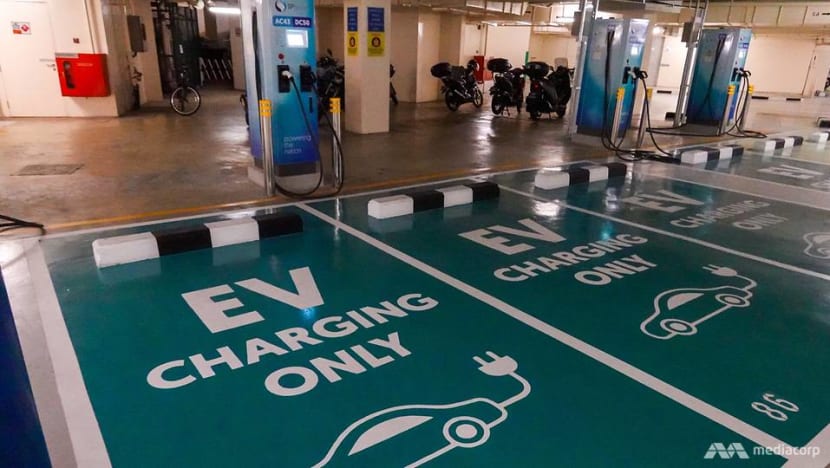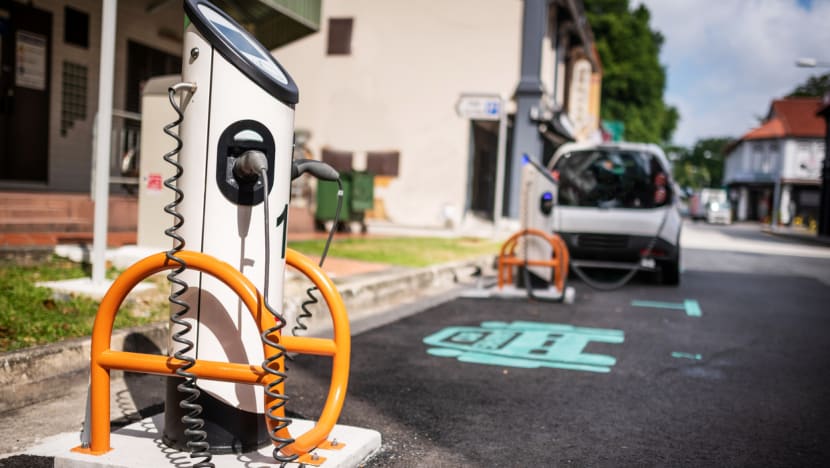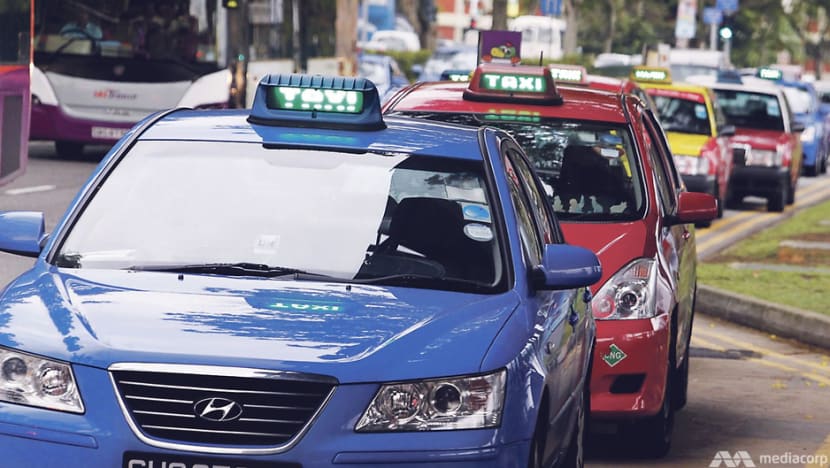Lack of charging infrastructure, financial concerns put brakes on electric vehicle switch for taxi drivers
Singapore plans to deploy about 60,000 charging points by the end of the decade, and is also trying to phase out internal combustion engine vehicles by 2040, in line with its sustainability goals.

SINGAPORE: Singapore may be racing to increase the adoption of electric vehicles (EVs), but many taxi drivers are not switching gears just yet.
While they are interested in opting for the greener choice, factors such as the lack of charging infrastructure and other cost considerations are holding them back from making the change.
National Taxi Association advisor Yeo Wan Ling said that EV technology and infrastructure are still “nascent” currently, making it difficult for drivers, especially those operating in the heartland areas.
Singapore has ramped up its EV adoption efforts in line with its sustainability goals, with plans to deploy about 60,000 charging points by the end of the decade.
It is also trying to phase out internal combustion engine vehicles by 2040.
FINDING CHARGING SPOTS
Some taxi drivers, such as Mr Ban Kum Cheong, have already made the green switch and experienced the issues that come along with it.
Mr Ban, who has been a taxi driver for seven years, made the change in 2021.
The opportunity came when he secured a job driving an electric vehicle for taxi operator HDT Singapore Holding, which has since closed down its electric taxi business. He currently drives an MG5 for another operator, Strides Mobility.
Driving an EV helps him save on vehicle maintenance and refuelling costs, the 51-year-old told CNA.

However, making the switch does come with its own set of trade-offs, key of which remains finding a place to charge his car.
"Sometimes, I will see from my app got one lot (so I) come over. (But) there's one car in front of me, so I have to switch to another place, which actually costs me a bit of time also,” explained Mr Ban.
The lack of charging infrastructure is one major challenge in Singapore's drive to green its vehicles, with ongoing efforts by the government expected to ease the situation.
Apart from the number of charging points, location and accessibility is another factor, taxi drivers told CNA.
For example, some charging points are located in the furthest corners of sprawling carparks, making them a tad harder to reach.
FINANCIAL SENSE
Taxi drivers also told CNA they would be more open to the idea of EVs if the switch made financial sense, and if relief drivers could share the operating costs of renting and maintaining the EVs.

“One drawback is that it's hard to find a relief driver. So I hope that companies will give more work expense concessions, for sole drivers of taxis,” said one taxi driver, who only wanted to be known as Jackson.
He switched to an EV about a year back and, like Mr Ban, currently drives an MG5 for Strides Mobility.
The National Taxi Association stressed that while there are incentives for drivers to go electric, the infrastructure needs to tie in with targeted demand.

"A lot of our drivers actually want to go electric, because the cost of fuel, actually is much higher than that, if they went EV,” said Ms Yeo, who is also an advisor to the National Private Hire Vehicles Association.
“But the problem for a lot of the drivers is because the EV technology and the EV infrastructure are really quite nascent at this point. It is difficult for many of our drivers, especially if they are in the heartland areas, to be able to charge their vehicles."
While taxi operators declined to comment on this issue when contacted by CNA, a race is well underway to electrify fleets in pursuit of Singapore's green targets.
ComfortDelgro recently pledged S$6 billion to switch most of its fleet to EVs, while Strides Mobility plans to replace all its taxis with EVs by 2026.
















